Was given its name by Lieutenant Whipple in 1853. This canyon presented such an obstacle to his historic thirty-fifth parallel survey party that he wanted to let all that followed know what he thought of it. Devil's Canyon was appropriately named.below nardi

Other survey parties, like Whipple's, had to go miles out of their way just to cross the canyon. Lieutenant "Ned" Beale on his famous camel expedition of 1857 reported the canyon as impassable.
 The railroad tried to span the canyon in 1881 but Canyon Diablo once more lived up to its name. Evidently the timber parts of the railroad bridge were pre-assembled elsewhere and the plans were misread. The bridge came up several feet short!
The railroad tried to span the canyon in 1881 but Canyon Diablo once more lived up to its name. Evidently the timber parts of the railroad bridge were pre-assembled elsewhere and the plans were misread. The bridge came up several feet short!
Even before Man was known to live in this area, some 22,000 years ago, a giant nickel-iron meteor weighing several million tons and traveling at a speed of 133,000 miles per hour had plunged into the earth, creating a huge crater just east of Canyon Diablo, and destroying all life for a 100 mile radius. The meteor is estimated to have been only 81 feet in diameter, though the crater today is nearly a mile in diameter and is nearly 600 feet deep. Some prehistoric peoples left ruins within the rim of the crater, indicating that they found it a suitable place to live.
The meteor is estimated to have been only 81 feet in diameter, though the crater today is nearly a mile in diameter and is nearly 600 feet deep. Some prehistoric peoples left ruins within the rim of the crater, indicating that they found it a suitable place to live.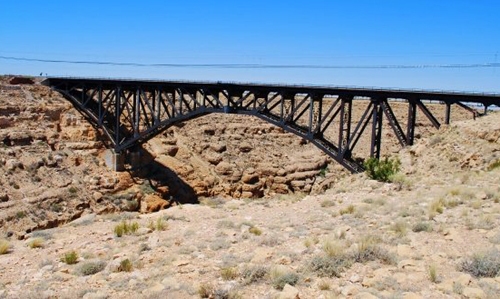
 The meteor is estimated to have been only 81 feet in diameter, though the crater today is nearly a mile in diameter and is nearly 600 feet deep. Some prehistoric peoples left ruins within the rim of the crater, indicating that they found it a suitable place to live.
The meteor is estimated to have been only 81 feet in diameter, though the crater today is nearly a mile in diameter and is nearly 600 feet deep. Some prehistoric peoples left ruins within the rim of the crater, indicating that they found it a suitable place to live.
The Meteor Crater wasn't considered to have been caused by a meteorite until 1886, when sheepherders found pieces of meteorites near Canyon Diablo. In 1891, a leading geologist, G. K. Gilbert, declared that the crater had not been made by a meteor. It wasn't until 1903 when Dr. Daniel Barringer, a mining engineer who was convinced that a large metallic meteor had created the crater, began drilling at the site but was unsuccessful in mining the mineral.
His project to locate the main mass of the meteorite was abandoned in 1929 after drilling to a depth of nearly 1400 feet on the southeastern slope of the crater. Modern technology reveals that about 80% of the meteorite had been vaporized on impact and that only about 10% still lies beneath the south rim. An excellent museum at the site tells the story very well.
The first known Europeans to see Canyon Diablo were Spaniards from part of Coronado's expedition into New Mexico in 1540-42. They were led by Captain Don Garcia de Cardenas, and had been sent by Coronado from the Hopi villages to find the Grand Canyon of the Colorado River. They crossed Canyon Diablo where it enters the Little Colorado River.
TRAVELERS AND TRADERS
For the next 300 years, countless explorers, settlers, traders and treasure seekers, trying to establish a direct route to the beautiful San Francisco Peaks on the western horizon and from there to the Pacific, forced to make a detour of some 25 miles either north or south in order to proceed across the Little Colorado River. In 1853, Capt. Amiel W. Whipple, on his historic thirty-fifth parallel railroad survey for then Secretary of War Jefferson Davis, reached the edge of the deep gorge and dubbed it Canyon Diablo.
He wrote in his journal, "we were all surprised to find at our feet, in magnesium limestone, a chasm probably one hundred feet in depth, the sides precipitous, and about three hundred feet across at the top. A thread-like rill of water could be seen below, but descent was impossible. For a railroad it could be bridged and the banks would furnish plenty of stone for the purpose." It was almost three decades later that Whipple's estimate of the depth of this canyon was found to be lacking 155 feet
.

He wrote in his journal, "we were all surprised to find at our feet, in magnesium limestone, a chasm probably one hundred feet in depth, the sides precipitous, and about three hundred feet across at the top. A thread-like rill of water could be seen below, but descent was impossible. For a railroad it could be bridged and the banks would furnish plenty of stone for the purpose." It was almost three decades later that Whipple's estimate of the depth of this canyon was found to be lacking 155 feet
.

Spaniards were passing continually from New Mexico through this area from 1750 on. The first American traders who are known about arrived in 1825. They were beaver trappers, who did their trapping along the Little Colorado which, until the late 1880s, contained a heavy growth of cottonwoods and willows extending out into the mud flats. After the American occupation of the southwest, the regular route from the east in a direct line to the San Francisco Peaks on the horizon led traders and other travelers right to the level rim of the chasm known as Canyon Diablo. From the Indians the travelers would learn that access to water and a crossing point could be reached a few miles downstream. True, it was a fairly steep, rough route, but it was certainly more possible than the one they had first encountered.
Along these walls hundreds of names were cut into the rock. Of the earliest still existing one can be read in part:
S .Bac -............
de Julio 1830
Another has only the date, 1849, legible, but dates from 1860 to the middle 1880s are many.
In 1854, only one year after Whipple had been through this country and made his survey, Felix Aubrey, a Santa Fe trader, laid out the first wagon route eastward across northern Arizona, traveling from San Jose, California with sixty men to Santa Fe. When he reached the west rim of Canyon Diablo, he was baffled until Indians told him he could detour downstream. He then proceeded north along the rim to the regular crossing. While at Canyon Diablo, he met a large number of Indians, who traded him $1500 in gold nuggets for some old clothing and blankets, but wouldn't disclose the source of the gold. After reaching Santa Fe, he was killed in August of 1854 in a personal encounter. His route was known after that as the California Santa Fe Trail.
The next major survey of the 35th parallel was the famous Beale Camel Experiment in 1857. Again, Secretary of War Jefferson Davis was the official largely responsible for this seemingly bizarre endeavor of using the camels to pack supplies and equipment from Fort Defiance, Arizona to California's eastern frontier. Seventy-nine camels, imported from the Middle East through Texas seaports, were led by Arab, Greek and Turkish camel drivers and commanded by colorful Ned Beale, later to become well known as the one who carried the news of the California gold strike to President Millard Fillmore.
Beale's expedition reached Canyon Diablo. His guide had warned him that he could not cross this chasm so far south of the Little Colorado, but he had to find out for himself, going north to the old trail. At this time the trail was designated as the Beale Road. Beale took his camels to his ranch at Fort Tejon, California. The following year, he made another trip along the road he had laid out. The Civil War ended what had been a successful experiment with camels able to carry 700 pounds each and survive on the desert vegetation. Plans for a railroad to the west coast were put on hold until the 1880s, and the camels were sold or escaped into the wild. Some of those camels were seen in the area as late as 1900. Beale's Camel Road remained the basis for the 1920's National Old Trail Highway, which we know as Route 66, or for the younger ones of us, U.S.40.
The following year, he made another trip along the road he had laid out. The Civil War ended what had been a successful experiment with camels able to carry 700 pounds each and survive on the desert vegetation. Plans for a railroad to the west coast were put on hold until the 1880s, and the camels were sold or escaped into the wild. Some of those camels were seen in the area as late as 1900. Beale's Camel Road remained the basis for the 1920's National Old Trail Highway, which we know as Route 66, or for the younger ones of us, U.S.40.
Beale's expedition reached Canyon Diablo. His guide had warned him that he could not cross this chasm so far south of the Little Colorado, but he had to find out for himself, going north to the old trail. At this time the trail was designated as the Beale Road. Beale took his camels to his ranch at Fort Tejon, California.
 The following year, he made another trip along the road he had laid out. The Civil War ended what had been a successful experiment with camels able to carry 700 pounds each and survive on the desert vegetation. Plans for a railroad to the west coast were put on hold until the 1880s, and the camels were sold or escaped into the wild. Some of those camels were seen in the area as late as 1900. Beale's Camel Road remained the basis for the 1920's National Old Trail Highway, which we know as Route 66, or for the younger ones of us, U.S.40.
The following year, he made another trip along the road he had laid out. The Civil War ended what had been a successful experiment with camels able to carry 700 pounds each and survive on the desert vegetation. Plans for a railroad to the west coast were put on hold until the 1880s, and the camels were sold or escaped into the wild. Some of those camels were seen in the area as late as 1900. Beale's Camel Road remained the basis for the 1920's National Old Trail Highway, which we know as Route 66, or for the younger ones of us, U.S.40.
THE RANCHERS
Activity in the area was not at a standstill, however. Indeed, from 1860 on, sheep and cattle ranchers had located not many miles away, and grazed their animals along Canyon Diablo. The first big sheep man of importance was John Clark, who brought 3000 head of sheep from California to the area for summer and fall grazing in 1875. The following year William Ashurst, father of one of the first U. S. Senators from Arizona, Henry Fountain Ashurst, located south and used Canyon Diablo ranges part of the time. The same year, the Daggs brothers brought more than 10,000 sheep from California into the area.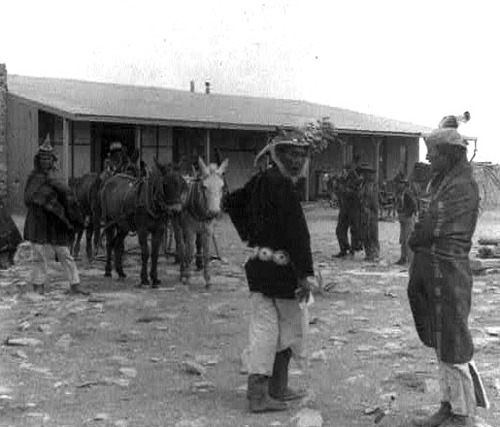

THE TRADERS
During the 1850s, Apaches often raided north, and Navajo families would find refuge in the depths of Canyon Diablo. It was there, in the Canyon, that the pack train traders, the forerunners of later established trading posts, would find them. By that time they were trading lead, bullet molds, powder, dye, buffalo robes, cotton blankets, flints, Green River knives, cloth, glass beads and imitation silver jewelry.
In trade they received from the Indians horses, mules and plain striped handmade woolen blankets known as wagon blankets. One trader well known to the Navajo for many years after, was called "Billikona Sani " (Old American). He arrived during the summer of 1852, and spoke Navajo, indicating that he had probably lived previously among the Navajo tribesmen. The wonderful magic which he performed was mixing the raw alcohol he carried at one gallon to three of water, and adding cayenne pepper and chewing tobacco. This was what was known as Arizona Frontier Whiskey.
In trade they received from the Indians horses, mules and plain striped handmade woolen blankets known as wagon blankets. One trader well known to the Navajo for many years after, was called "Billikona Sani " (Old American). He arrived during the summer of 1852, and spoke Navajo, indicating that he had probably lived previously among the Navajo tribesmen. The wonderful magic which he performed was mixing the raw alcohol he carried at one gallon to three of water, and adding cayenne pepper and chewing tobacco. This was what was known as Arizona Frontier Whiskey.
When the Navajo tribal roundup of 1864 began, many Navajo families fled into Canyon Diablo and its many caves to avoid being discovered by U.S. troops. Eight-thousand Navajo were eventually imprisoned at Fort Sumner, New Mexico for four years.
Their livestock and land were taken by the cavalry. The Civil War halted settlement for some years, but after that war, the cavalry returned to battle the Indians, the first at Canyon Diablo being on April 18, 1867. Herman Wolf, a beaver trader for many years in this area, was setting up a large stockade picket post on the river downstream from the mouth of Canyon Diablo. He and the U.S. Army were both engaged in fighting renegade Indians. But when most of the Navajo were released from Fort Sumner and returned to their homes in 1868, many of them traveled down the Little Colorado basin, perhaps thinking that the mere presence of a white man at Wolf Post afforded them protection. From there they moved south into their old hunting grounds along both sides of Canyon Diablo.

Their livestock and land were taken by the cavalry. The Civil War halted settlement for some years, but after that war, the cavalry returned to battle the Indians, the first at Canyon Diablo being on April 18, 1867. Herman Wolf, a beaver trader for many years in this area, was setting up a large stockade picket post on the river downstream from the mouth of Canyon Diablo. He and the U.S. Army were both engaged in fighting renegade Indians. But when most of the Navajo were released from Fort Sumner and returned to their homes in 1868, many of them traveled down the Little Colorado basin, perhaps thinking that the mere presence of a white man at Wolf Post afforded them protection. From there they moved south into their old hunting grounds along both sides of Canyon Diablo.

THE BRIDGE
It was not until November, 1881, that the Atlantic and Pacific Railroad construction, running from Ft. Smith, Arkansas across the plains to Albuquerque, and then west toward Los Angeles, reached the eastern edge of 255 foot deep Canyon Diablo. Timber parts of the bridge to span the gorge were pre-assembled elsewhere, but someone misread the plans; the bridge came up several feet short. This mistake plus other financial difficulties meant that construction was delayed for seven months. 

By this time, the remarkable Edward Ayers, later to become a chief benefactor of the Field Museum and the Newberry Library in Chicago, had assembled a sawmill and taken it to the end of the track, transported it by ox-team across the Little Colorado and to Flagstaff, and wasted no time in establishing the Ayers Lumber Company, which provided the lumber for the railroad as it proceeded west.
THE TOWN
While waiting for the bridge to be built, the shack town of Canyon Diablo grew into a wild place populated by some 2,000 untamed citizens. The yellow-painted depot, the section crew's house, stock pens, a water tank, freight docks and warehouses stood at the western end of the town on railroad property.
From there a mile-long row of tin, tar paper and canvas buildings extended eastward along both sides of the one rocky street. Hell Street had fourteen saloons, ten gambling houses, four houses of prostitution and two dance pavilions, a grocery and dry goods store and several eating counters. Murder on the street was common and there was a holdup almost every hour. Tales about the exploits of colorful characters at Canyon Diablo, including Billy the Kid, Keno Harry, Clabberfoot Annie and B.S. Mary were every bit as wild as those told about Tombstone or Virginia City.
The sawmill men and Flagstaff merchants provided a salary for a marshal, but finding someone to fill the job was not easy. The first marshal lasted a mere five hours before he was killed; the second, two long weeks; the third, three weeks before he was shot with forty-five slugs; the fourth, six days.
From there a mile-long row of tin, tar paper and canvas buildings extended eastward along both sides of the one rocky street. Hell Street had fourteen saloons, ten gambling houses, four houses of prostitution and two dance pavilions, a grocery and dry goods store and several eating counters. Murder on the street was common and there was a holdup almost every hour. Tales about the exploits of colorful characters at Canyon Diablo, including Billy the Kid, Keno Harry, Clabberfoot Annie and B.S. Mary were every bit as wild as those told about Tombstone or Virginia City.
The sawmill men and Flagstaff merchants provided a salary for a marshal, but finding someone to fill the job was not easy. The first marshal lasted a mere five hours before he was killed; the second, two long weeks; the third, three weeks before he was shot with forty-five slugs; the fourth, six days.
There followed a period when the town was without a marshal, until a stranger, an ex-preacher from Texas, rode into town carrying two pistols, and being spotted by the hiring committee, was offered the job. Being hungry, he accepted, and lasted a record thirty days, killing a man a day and wounding so many that the railroad hospital in Winslow refused to accept any more gunshot victims. Canyon Diablo's Boot Hill, located south of the railroad tracks, had 35 graves at one time, but most bodies were buried throughout the town, wherever they fell.

When Flagstaff businessmen appealed to Territorial Governor Frederick Little for help, he requested that the army restore order. However, by the time the army was to be deployed, the gorge of Canyon Diablo was bridged, and the railroad proceeded on west to California. This, which was claimed to be the highest railroad in the world, had cost $200,000. Completed in June, 1882 after one year, it was 541 feet long, 223 feet high, 11 spans at 30-300 feet each, and used 1489 cubic yards of masonry. When the first train rolled over it at 3:37 on July 1, 1882, the rip-roaring town of Canyon Diablo died overnight. Whereas during the previous two years Canyon Diablo had been the railhead for Flagstaff and Prescott, with large loads of freight being transferred to wagons and proceeding north on the east rim of the canyon to the old crossing, with passenger trains making regular runs from Winslow and a regular stage line being operated from Flagstaff to Canyon Diablo, the importance of the town as a transportation hub was non-existent once the bridge was built.

The location became famous as a site for train robberies, the most lucrative being in 1889 when a train had stopped at the station to take on water, and was robbed by four men, who managed to take the contents of the safe, as well as watches and jewelry. Sheriff Bucky O'Neill and several other officers pursued the four cowboys into Utah and back into Arizona, where they were captured. One escaped, the others were imprisoned at Prescott, but of the over $100,000 in loot they had stolen, only $100 was found on them, leading to the belief that they had buried the rest of it below the rim of Canyon Diablo. The treasure has never been found but many have searched for it ever since.
CANYON DIABLO TRADING POST
The year 1886 was the year when Fred W. Volz established a trading post at Canyon Diablo. The trading post was built near the southwestern boundary of the Navajo reservation, and just a few yards away from the Atlantic and Pacific Railroad depot at Canyon Diablo. Mr. Volz was to remain there until 1910, establishing both a U.S. Post Office and a Wells Fargo Station at the trading post. Since the Post was painted white, the Navajo referred to it as Kinigai (White House). Their name for the Canyon was Kinigai Boko (White House Canyon). Fred Volz and his wife were married during these years and had one daughter, Jeanette, who lived there from 1890 to 1910.

MORE RECENTLY
To this day, both passenger and freight trains speed along the Santa Fe Railroad (formerly Atlantic & Pacific) tracks past the ruins of the trading post, and cross Canyon Diablo on the bridge, rebuilt in the same spot as the 1882 bridge. The masonry bases of the original bridge stanchions can be seen next to the bases of the present one. The Canyon Diablo Train Station was a flag stop for many years after the town died.
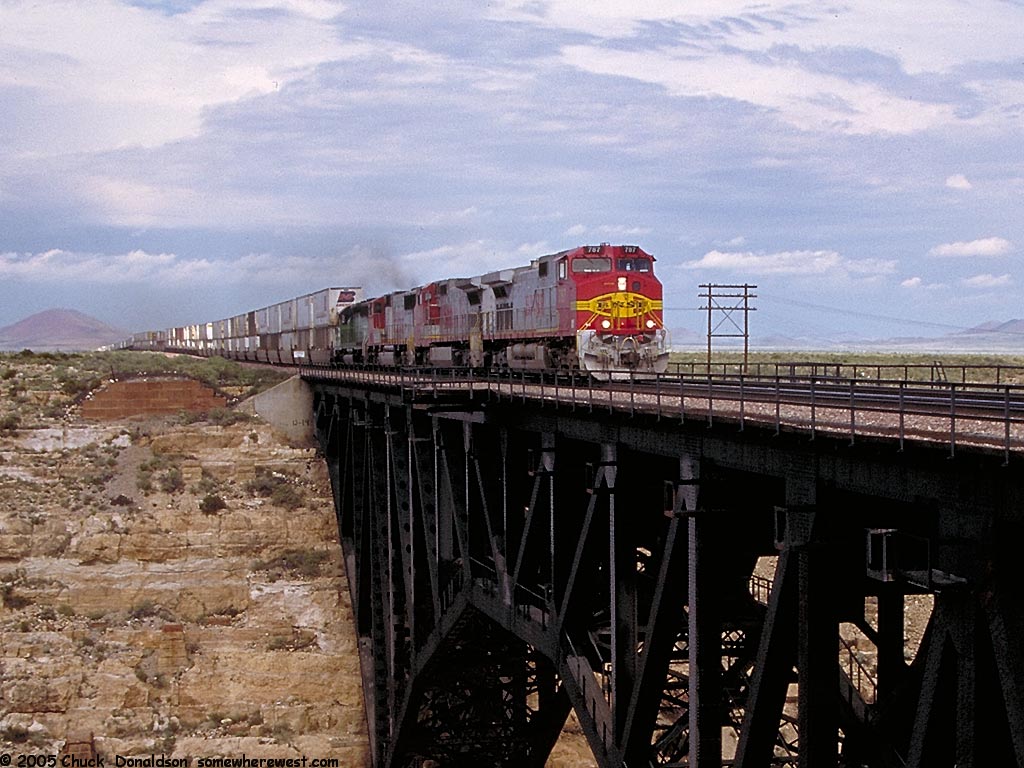
In 1934, Philip Hesch, signal maintainer at Canyon Diablo Station married the widow of Earl M. Cundiff. The Cundiffs had lived in the area for ten or more years, Mr. Cundiff had been shot and killed in 1926 by a man who had leased the store they owned. 1934 was also the year that the big trading post burned. That same year Mrs. Ray Thomas, with an invalid husband, taught school at Canyon Diablo station.
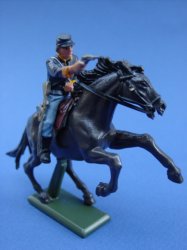
Life goes on, at a slower pace, while tourists speed by on U.S. 40. A sturdy barbed wire fence marks the line between the southern boundary of the Navajo Reservation and the Atchison, Topeka and Santa Fe railroad tracks. Just north of this fence, on Reservation land, the rocky ruins of the Volz trading post seem not to have disintegrated markedly in the last 30 years. A building dating back to the 1920s or 30s nearby has been used as a souvenir store and as a fine modern ranch home, but was completely vandalized some time in the last ten years. Where there was a road in 1963 leading from Route 66 to this spot, there is now only a trail requiring a four wheel drive vehicle and a lot of determination to cover the one and a half miles from U.S. 40 north along the Canyon toward the visible row of power poles along the railroad. To mark the site of the once noisy town, there is only a small, tired sign next to the tracks saying, very softly, "



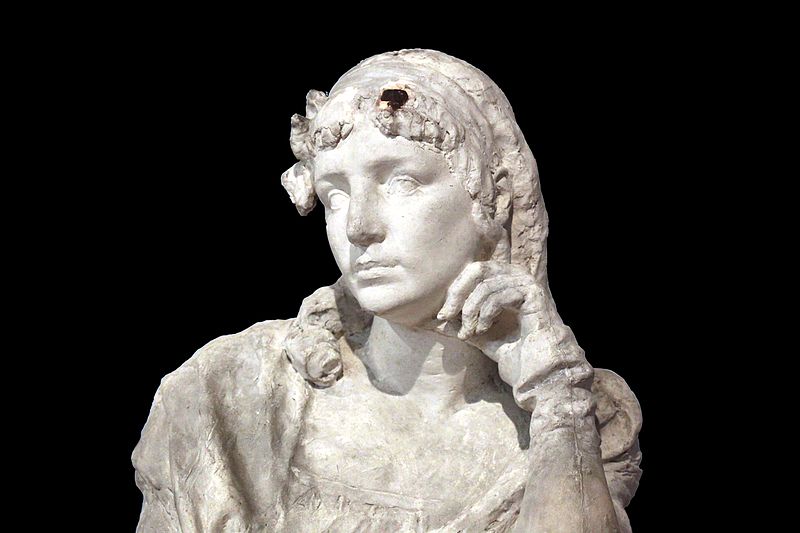











Q~~_12.jpg)








